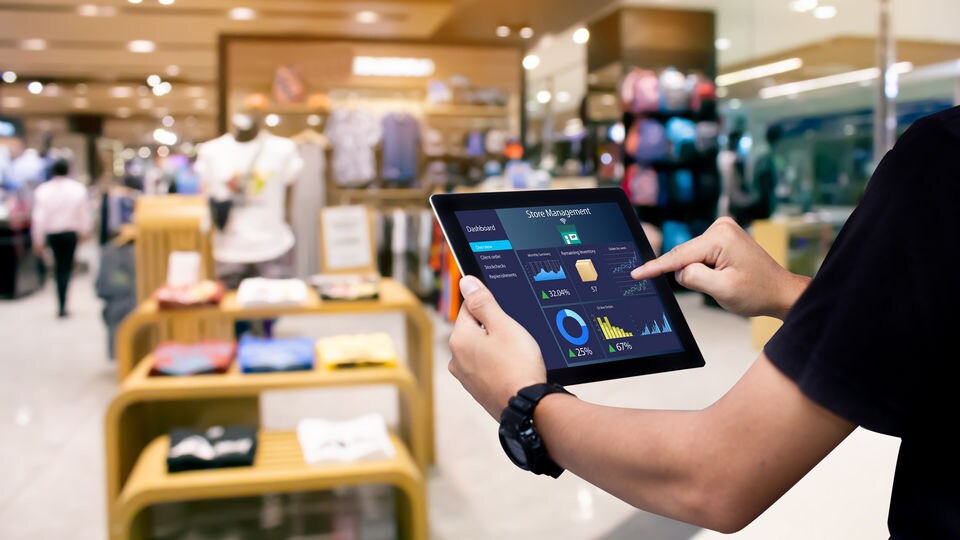Article
3 Trends Shaping Health and Beauty Retail in North America

Health and beauty retail has weathered much over the course of the pandemic…
…but after an approximate 30% contraction of the global beauty market early in the pandemic, consumers have become more focused on health and wellness — and their spending shows it.
Seventy-one percent of surveyed U.S. consumers intend to spend the same or more in 2022 on health and beauty products as they did pre-pandemic. In fact, McKinsey & Co. estimates the wellness market — of which health and beauty is an integral part — to be worth $1.5 trillion worldwide, with annual growth of up to 10%. The e-commerce market alone may grow between 20% and 30%.
The trajectory of health and beauty retail is becoming clearer, and the outlook is good — so long as retailers adapt accordingly. Let's look at three trends shaping the future of health and beauty retail, and what you can do to help make the most of the moment.
1. Traffic: in-store, digital, and the new normal
By and large, foot traffic for health and beauty retailers plummeted — and digital traffic soared — when the pandemic arrived. Due to the essential status of pharmacies, foot traffic for major chains like CVS and Walgreens has mostly recovered to pre-pandemic levels. Meanwhile, some major beauty retailers have maintained great gains in digital traffic — even as foot traffic is also increasing (though not reaching 2019 levels). Bottom line: Omnichannel is here to stay, despite stabilizing foot traffic — and retailers will need to adapt to this new norm.
As traffic finds its (new) normal, retailers will need to evaluate their patterns anew in order to staff and stock accordingly. It will be important to integrate digital and in-store traffic patterns into staffing and inventory strategy, especially for retailers that have seen a significant uptick in omnichannel use — because it's not just a matter of the number of customers who walk through the door, but how many orders need to be fulfilled for customers using Click & Collect.
Solution
Using a sophisticated traffic analytics solution that goes beyond people counting to provide insights on the shopper journey and paths-to-purchase can help ensure retailers staff both to general demand and specific department. Likewise, utilizing item-level inventory intelligence delivers real-time transparency and accuracy that enables retailers to stock and sell confidently, without the concern that a product purchased in-store will leave a kerbside order unfulfilled (and customer disappointed).
Update your inventory processes and systems
Having "frozen" or "phantom" inventory risks disappointing shoppers. That's because an inventory system based on sales can be notoriously inaccurate, and that inaccuracy may prove disastrous for a shopping public that's widely adopted buy online, pick up in store (BOPIS)/ buy online, pick up at curbside (BOPAC). To be sure, a staggering 83% of shoppers say that convenience is more important than it was five years ago.
With such a high premium on convenience, you can imagine how a customer will feel if they've purchased something online, only to discover it's not in stock when they arrive to pick it up. (Not to mention the residual impact this customer experience can have on future business.)
So, what's the alternative?
One option is an RFID-powered solution that delivers inventory visibility from supply chain to storefront — and everywhere in between. With RFID-enabled, item-level inventory tracking, you can know precisely which items are in stock in any given store at any given moment. This allows retailers to:
- Maximise inventory investment across the entire enterprise by ensuring every last unit is sold
- Reduce stockouts and markdowns
- Execute omnichannel fulfillment profitably
- Deliver stellar customer experiences
- Gain visibility into the supply chain
3. Shrink — and what to do about it — takes center stage
Shrink plagues all markets, but the often high price point and small size of cosmetic products make them a prime target for theft, which is why shrink is an especially significant problem for health and beauty retailers. And the pain of shrink is felt beyond the bottom line — it strains inventory management. If a customer visits your store to purchase a product the website said was available, only to find it's not because someone walked out with it earlier, you risk losing a customer (and you've already lost the revenue).
To complicate matters, the obvious solution — keeping items in a display case behind lock and key — is detrimental to the shopper experience, and the small size of the products render many common tagging solutions impractical. So, what's a retailer to do?
Solution
"Obviously, preventing any shrink event is a priority, but having a broader understanding of your shrink helps you plan for the future," McCall said. "It's a constant game of chess between the retailer and the bad guys, and sometimes, you let the bad guys win today so you can learn how to beat them tomorrow."
Leveraging loss prevention solutions like RFID-enabled electronic article surveillance (EAS) can help you do just that. EAS systems can integrate with your existing channels, giving you insight into what is being stolen and when, and ensuring any items lost to shrink are correctly reflected in online sales platforms. Even better, integrate video surveillance into your loss prevention strategy for real-time suspicious behavior alerts and more insight into the how, who, and when of theft.
Takeaways
Something new is emerging from the pandemic years and signs point to health and beauty retail heading in the right direction, which means it's the exact wrong time for retailers to rely on "pre-pandemic normal" methods. Preparing for new traffic patterns, shifting priorities for the shopper experience, and vigilant mitigation of shrink will be key for retailers to hitch their profits to the market's rise.
Want to learn more? Download our report, The Future of Health and Beauty Retail.
Explore Related Topics

